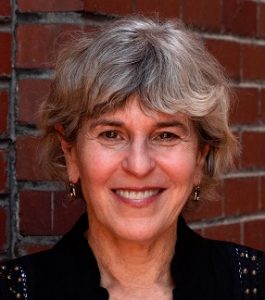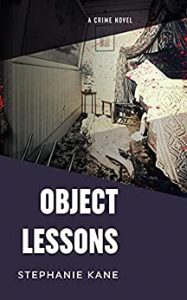Playing House
 Playing House
Playing House
In the 1940’s, Chicago heiress Frances Glessner Lee turned the notion of a dollhouse on its head. Her tiny models of violent crimes taught a new breed of cop to investigate crime scenes—in effect, to play house. She also inspired me, a mystery writer, to reexamine the meaning of home.
Born in 1878, Lee was heir to a farm equipment fortune. She longed to study medicine, but her parents tutored her at home in domestic arts and sent her brother to Harvard instead. They forced her into a society marriage she fled, returned to, and fled again. Lee’s happiest times were when she and her kids lived in a small cottage where they called each other by different names.
Lee’s interest in crime was ignited by George Burgess Magrath, a dashing classmate of her brother who became Lee’s lifelong friend. Magrath, a medical examiner, regaled her with tales of notorious murders he investigated. Detective work appealed to Lee, and she quickly grasped that homicide cops needed better training.
With a carpenter’s help, Lee built 18 models of crime scenes to an exacting one inch to one foot scale. All but one was a dwelling, and everything in them worked. A coffee pot had a real strainer and grounds; doors had latches and keys. Although Lee’s settings and trappings were relentlessly domestic, she called her dioramas “nutshells”—not dollhouses.
Through the ages, dollhouses had vastly different functions.
They originated in northern Europe in the sixteenth century as markers of their owners’ status and wealth. Dutch cabinet houses displayed expensive collections of miniatures. Seventeenth century “baby houses” were exact replicas of their owners’ homes, furnished with tiny versions of their belongings. The Nuremberg kitchen, which peaked in the nineteenth century, had a hearth, cupboards and dishes to teach girls to run a full-sized household. Dollhouses weren’t toys until the Industrial Revolution. Mass production came after World War Two.
One thing dollhouses didn’t have was dolls.
Instead, lives lived within were suggested by the tiny objects dollhouses contained. Teacups and open books, a wingchair pulled to a hearth with a tiny newspaper resting on the ottoman, invite fantasies about the people who live there. Lee added dolls. With their coffee pots and breakfast dishes and vanity mirrors, they forced cops to think about how her tiny victims lived.
Visiting violence on tiny but ordinary people in places where they should feel safe also evokes a certain existential dread. This inspired me to embark on my own deadly game of house. In Object Lessons, my third mystery starring Denver paintings conservator Lily Sparks, houses are both microcosms of evil and building blocks in a twisted plot.
Object Lessons opens with Castle Training, a husband-and-wife forensic team from Washington, D.C., bringing their own set of crime-scene dioramas to Denver to train local cops. Their dioramas depict murders in modern dwellings: a micro-mini studio apartment, an upscale bonsai conservatory, a condo clubhouse. A string of life-sized murders follows.
Is the killer using the dioramas as road maps, or targeting victims based on what their houses say about them? The connections Lily sees pull her into the orbit of a killer intent on going from master of a tiny universe to playing God.
Which brings me back to Frances Glessner Lee.
Lee’s dioramas are unsettling because of the questions they raise. If a tiny family can be slain in bed, is anywhere safe? Detectives can be taught to process crime scenes, but what narrative explains the darkness in a human heart?
Lee might say home is what you make it. That safety is a necessary illusion. That criminals are meant to be caught, not understood. Or that, in a nutshell, nothing is ever truly what it seems.
—
Stephanie Kane is a lawyer and award-winning author of seven crime novels. Born in Brooklyn, New York, she came to Colorado as a freshman at CU. A second-degree black belt, she owned and ran a karate studio in Boulder. After becoming a corporate partner at a top Denver law firm, she quit to do criminal defense work. She lives in Denver with her husband and two black cats.
Stephanie’s legal thrillers starring defense lawyer Jackie Flowers have won the Colorado Book Award for Mystery and two Colorado Authors League Awards for Genre Fiction. She belongs to Mystery Writers of America, Rocky Mountain Fiction Writers and the Colorado Authors League.
CONNECT WITH STEPHANIE KANE ONLINE
WEBSITE: writerkane.com
FACEBOOK: /AuthorStephanieKane
OBJECT LESSONS
 “A whodunit that delivers an excellent gallery of characters and captivating historical tidbits.” — Kirkus Reviews
“A whodunit that delivers an excellent gallery of characters and captivating historical tidbits.” — Kirkus Reviews
Can little crimes inspire big ones?
When Adam and Eve Castle bring their miniature dioramas to Denver to train cops in crime-scene investigation, a string of baffling murders follows. Called in to solve the crimes depicted in the dioramas, paintings conservator Lily Sparks discerns connections between them and the real murders which draw her into the orbit of a killer intent on going from master of a tiny universe to playing God.
Each diorama parallels a real crime. But why is the killer reenacting the diorama murders on a life-sized stage? Are the dioramas roadmaps for the crimes, or are the victims being targeted based on the homes and lifestyles the dioramas represent? To catch the killer, Lily must now embark on a deadly new game of house played by a psychopath’s rules.
BUY HERE
Category: On Writing

























Sounds fascinating! And Ms. Kane has an interesting background to bring to her writing, too!